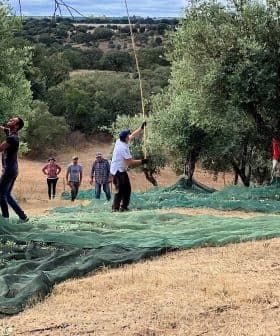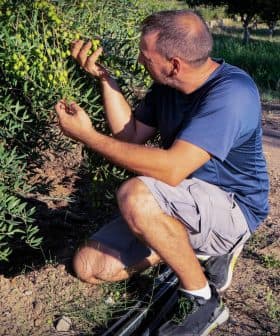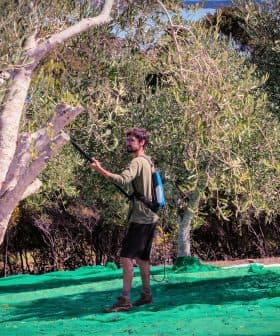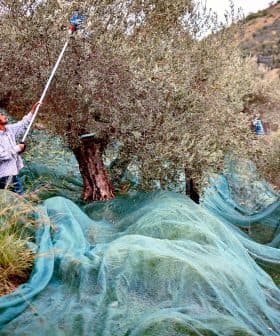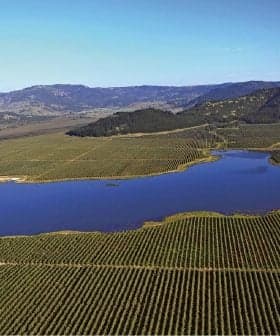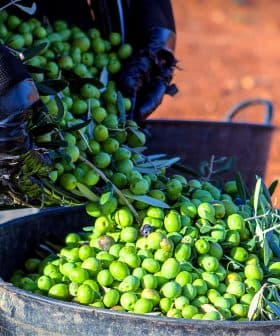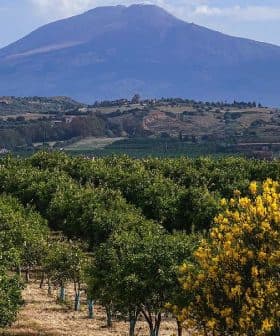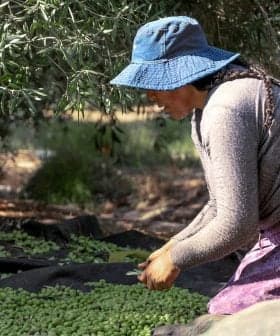Olive Oil Production in Portugal Set to Rebound
Officials estimate Portugal will produce 140,000 to 150,000 tons of olive oil in the current crop year. Drought and labor shortages presented significant challenges.
 (Photo: Julio Alves)
(Photo: Julio Alves)  7.3K reads
7.3K readsPortuguese olive farmers and officials expect a slight increase in production compared to last year, with estimates suggesting a harvest of around 150,000 tons in the 2023/24 season. Factors such as alternating bearing cycles, weather conditions, and the transition to modern groves are influencing the harvest, with some regions experiencing mixed yields and challenges related to labor shortages, climate change, and rising production costs.
As the olive harvest gets underway in Portugal, farmers and officials anticipate a slight production rebound compared to last year but not a repeat of the record-high yield of the 2021/22 crop year.
Separate estimates from the European Union and Federation of the E.U. Olive Oil Industry (Fedolive) anticipate the harvest could reach 150,000 tons in 2023/24, about 20 percent higher than last year and nearly 12 percent above the five-year average.
In the future, we will be able to surpass the record reached in the 2021 harvest due to the increase in the area of modern olive groves in hedgerows and because we have many new olive groves that are only now coming into production.
Officials from the Alentejo Olive Oil Sustainability Program, a group of 20 producers from Portugal’s largest olive-growing region, estimated that national production would be closer to 140,000 to 145,000 tons.
Farmers attributed the production rebound to many of the country’s groves entering an ‘on-year’ in the natural alternate bearing cycle of the olive tree.
See Also:2023 Harvest UpdateAdditionally, northern Portugal experienced a rainy winter, alleviating some of the worst symptoms of last year’s historic drought. This was followed by a hot and dry summer, limiting the emergence of pests, including the olive fruit fly.
“The irrigated olive groves are progressing well and have good prospects for the 2023 campaign,” Gonçalo Moreira, manager of the Alentejo Olive Oil Sustainability Program, told Olive Oil Times.
“The production capacity was conditioned by successive frosts at the end of winter and beginning of spring and then by high heat during the flowering period, which led to problems with flowering and consequently with olive production,” he added. “This is combined with the impact of drought on dry olive groves and hailstorms at the end of summer in the northern region of Portugal.”
The combination of much-needed rain and extreme weather events has resulted in a mixed harvest for producers in the northern Trás-os-Montes region, which is dominated by traditional olive groves.
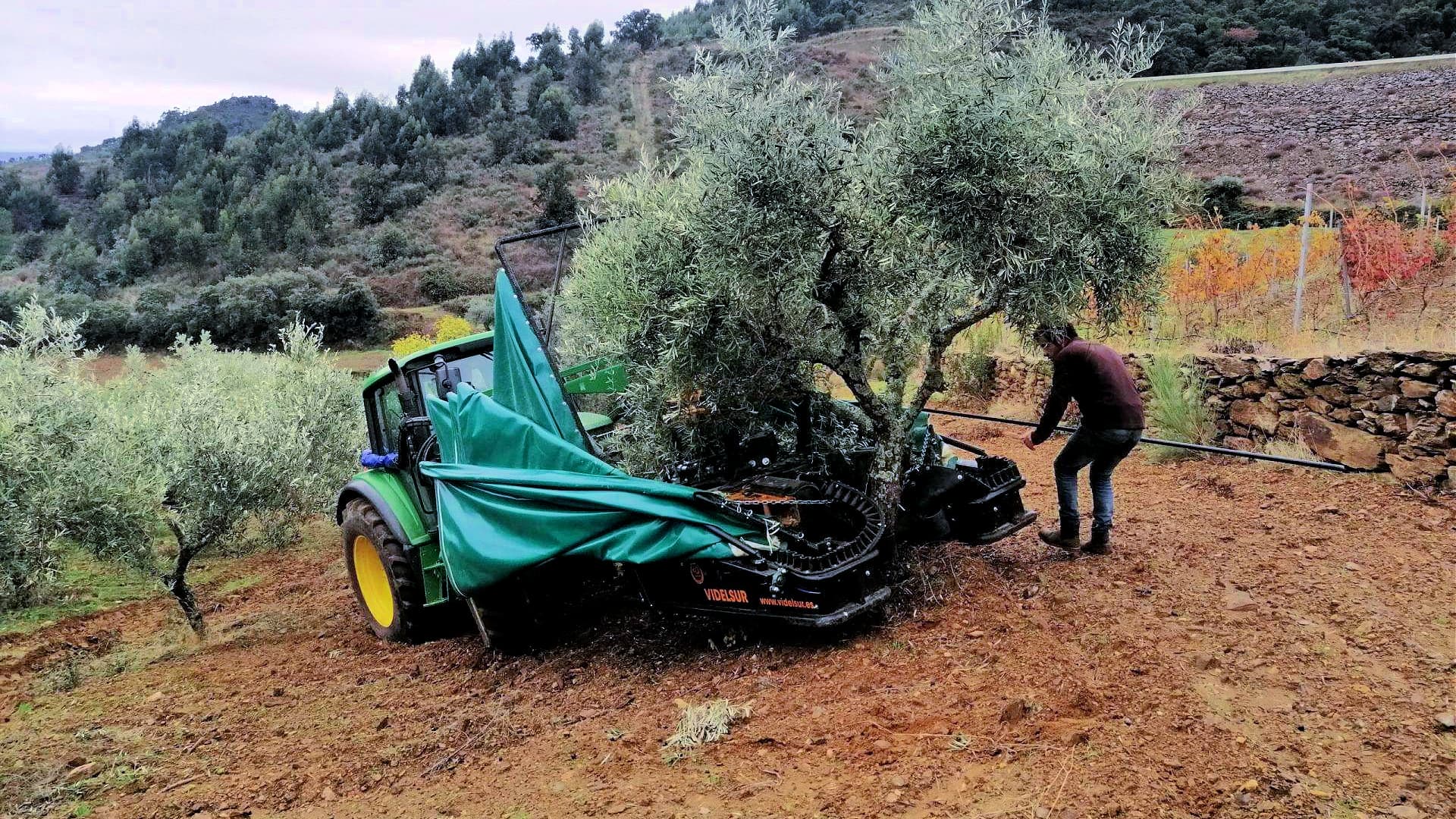
Finding enough workers is a perennial challenge of harvesting olives in the traditional groves of Trás-os-Montes. (Photo: Julio Alves)
“This harvest is going to be a mixed one in terms of yields, in our grove as in the rest of the country,” Julio Alves, founder of Trás-os-Montes-based Quinta dos Olmais, told Olive Oil Times. “We have plots with a very reasonable amount of olives and other sectors where the trees have almost no olives.”
“I am not a fan of predictions because just one bad day can ruin an entire year of hard work,” he added. “So far, this year’s harvest is looking much better than last year, but frankly, this is not that hard, as last year was the worst year ever recorded at our farm.”
Alves said that his groves, others in Trás-os-Montes and other parts of northern Portugal benefited from the wet winter. The ample rainfall brought some relief after the “hellish summer” of 2022, which lowered expectations for the current harvest as scorching temperatures damaged new shoots on the trees.
However, based on his observations, he was skeptical that Portuguese production would reach 150,000 tons.
On the opposite side of Portugal, in the southern Algarve region, Pedro Esperança, the chief of operations at Viveiros Monterosa, told Olive Oil Times that the company was entering the final week of the harvest after beginning ten days ahead of schedule.
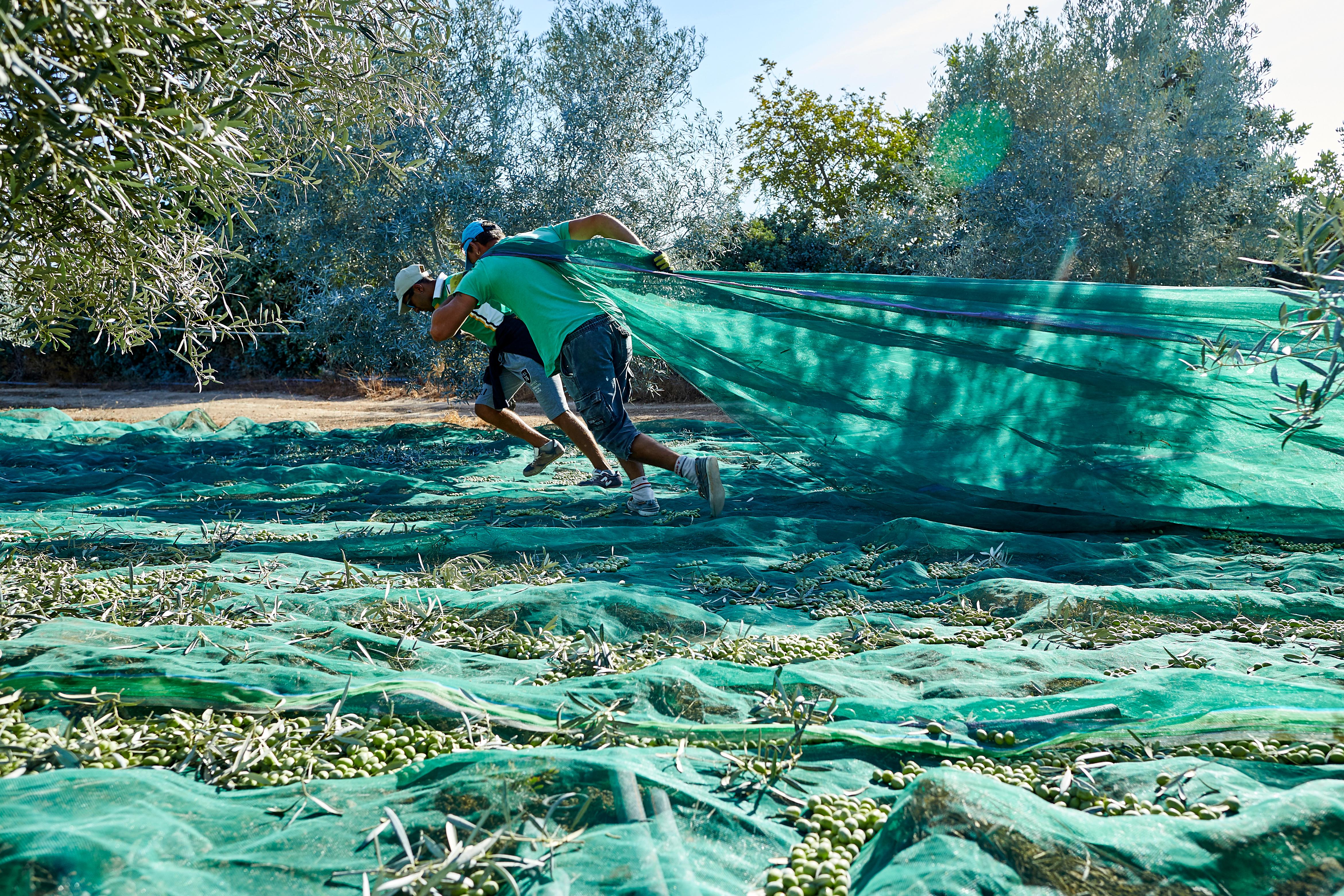
Producers in Alentejo expect a significant production increase compared to last year after a wet winter refilled reservoirs. (Photo: Pedro Esperança)
“In quantity, we have a significant increase compared to last year, which was expected with an ‘on-year,’ ” he said. “Quality is very high, we have a cooling system that allows us to do the extraction process under low temperatures, pests and disease levels were very low, and the timing of harvest was close to perfection.”
However, Esperança said the lack of rain during the spring meant production could not rebound fully. Furthermore, unprecedentedly high autumn temperatures at the start of the harvest posed a significant logistical challenge.
“You could see with your eyes fruit collapsing when exposed to direct sun,” he said. As a result, the company worked tirelessly to move the olives straight to the air-conditioned mill as soon as they were harvested.
However, Esperança said high temperatures significantly lowered the emergence of pests and diseases. “Climate change actually helps on this subject with irrigated olive trees and a cooled extraction system,” he added.
Esperança agreed that Portugal could produce 150,000 tons of olive oil this year and anticipated production to increase as more growers irrigate their groves and new producers plant high-density and super-high-density plantations.
Still, he said the country’s increasingly hot and dry climate would require the government to find new solutions to drought.
“It’s dramatic; governments need to find a way to store water when it rains and distribute it to the farmers,” Esperança said. “Farmers need to have the view and capacity to convert or install irrigated olive orchards so we will not experience what southern Spain is.”
Directly north of the Algarve is Alentejo. According to Moreira from the Alentejo Olive Oil Sustainability Program, Alentejo was responsible for 92 percent of Portuguese olive oil production in the previous crop year.
“In 2023 the drought situation in southern Portugal has not improved, which is a problem for the unirrigated olive grove,” he said. “In the regions north of Alentejo, the rain was regular and with normal values for the seasons, which guaranteed water for the regular cycle of the olive trees.”
“In Alentejo, olive oil production is mainly carried out in irrigated olive groves, which allows olive trees to have access to water at crucial moments for their development,” Moreira added. “Irrigated olive groves are more resistant to drought, and Alqueva guarantees interannual regularity, which is why it would be important to develop other projects like Alqueva in Portugal to mitigate the impact of climate change.”
Manuel Norte Santo, the export manager of Establecimiento Manuel Silva Torrado, also located in Alentejo, told Olive Oil Times that he is expecting a medium harvest, which will exceed last year’s total but fall short of the country’s record-breaking yield two years ago.

Amid scorching autumn temperatures, milling at night ensures olives are cool when they are harvested. (Photo: Establecimiento Manuel Silva Torrado)
“We already started the harvest here,” he said. “The rain took some stress off the tree, and it seems that it delayed the harvest a little, but soon after the rains in September, high temperatures appeared in October, which accelerated the process again. These temperatures also caused the appearance of flies, which accelerated the picking of some producers.”
While Norte Santo said that rainfall had been scarce in southern Portugal over the winter and spring, he said enough had fallen to replenish reservoirs and other water reserves, which allowed the company to irrigate the groves at crucial moments in olive development.
Norte Santo believes that production in Portugal this year could reach the estimated 150,000 tons but agreed with Esperança that olive oil yields would continue to trend upward.
“Every day, we see the appearance of more olive groves in our country, mainly in the Alentejo and a huge conversion of traditional olive groves to intensive and super-intensive plantations,” he said. “Portugal is developing and optimizing its agricultural techniques and methods, achieving excellent production results in its olive groves.”
Moreira went one step further and argued that Portugal could soon routinely exceed its record-high harvest in 2021/22 as more super-high-density groves are planted.
“In the future, we will be able to surpass the record reached in the 2021 harvest due to the increase in the area of modern olive groves in hedgerows and because we have many new olive groves that are only now coming into production, allowing us to increase the amount of olive oil produced in Portugal,” he said.
“Alongside this productive growth, we have a major technological modernization not only in olive groves, with increases in productivity, but mainly in mills with an increase in olive oil extraction capacity and its quality,” Moreira added.
In Northern Alentejo, Ana Cardoso and Paolo Morosi of Monte do Camelo agreed that this year’s harvest would be better than last year’s. Still, the drought had prevented their groves from reaching their full potential.
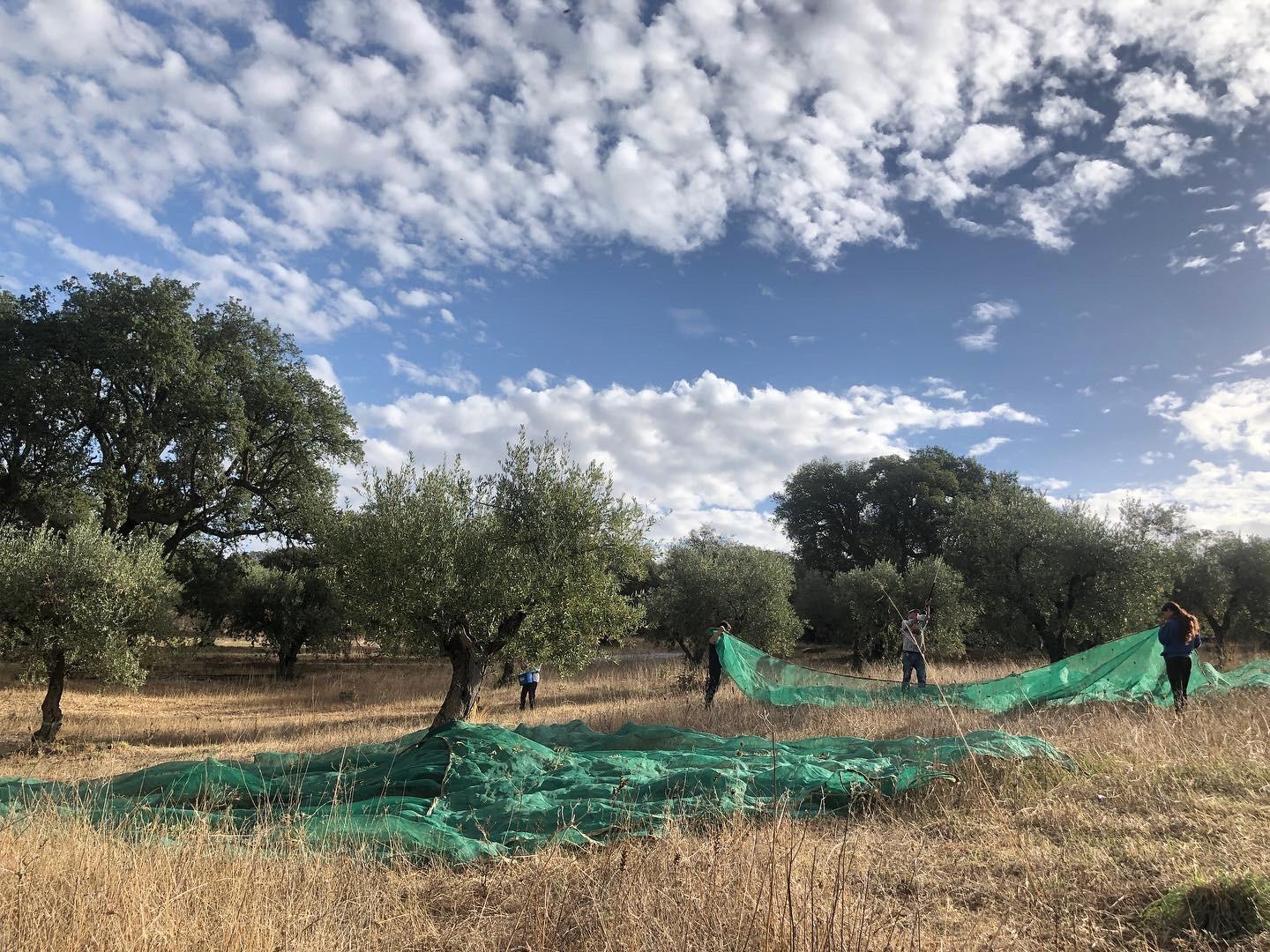
As intensive olive groves change the face of Alentejo, traditional producers worry for their future. (Photo: Ana Cardoso and Paolo Morosi)
“Compared to the 2022 campaign, we expect a sufficient, though not optimal, yield this year,” they told Olive Oil Times. “There is uneven production on our grove, which means this will not be a year of exceptional harvest.”
“The reason for that might be, once again, related to the climate episodes of heavy frost in late winter, drought, extreme heat and wind that we have been experiencing,” Cardoso and Morosi added.
While the country’s transition to modern olive groves will increase annual production, traditional producers such as Cardoso and Morosi are concerned about how the change will impact the environment and the economics of traditional groves.
“Small-medium scale producers, in addition to having to cope with drought and other challenges, find themselves forced to contend with the ever-increasing number of super-intensive groves, both environmentally and economically,” they said.
Back in Trás-os-Montes, Alves said one of his most significant challenges is finding enough workers to harvest his traditionally planted groves.
“Our major problem continues to be the lack of manpower; it has become systemic to farming and, in our region, gets worse every year,” he said. “I can’t foresee a solution in the near future as most of our work is seasonal and does not attract people to a region that each year sees more cuts in government spending on education and healthcare.”
In the groves of Viveiros Monterosa, Esperança also cited labor as one of his company’s most significant challenges. Along with finding enough workers, he said the turnover meant that workers have to be trained each year, and there is no accumulation of knowledge.
“On selling, the biggest challenge is global uncertainty, which leads to market uncertainty,” Esperança said. “Clients are not buying or paying less; they simply are dividing usual orders to reduce the risk of not selling existing stock.”
Meanwhile, Norte Santo said the impacts of inflation have continued to drive up production costs.
“The situation of production costs continues to be very concerning; prices through the year continued to rise, and there is no sign of a decrease,” he said.
“The producers have to make a great financial effort to ensure that nothing is missing from their production regimes, but sometimes this is not possible, and they must dispense with some of the treatments or procedures, which hurts the production of their olive grove,” Norte Santo concluded.
Share this article


